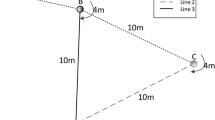Abstract
At many police departments high-priority callers sometimes incur undue delays that could be avoided by the use of a differential response strategy that takes full account of the different “costs” of delay for different priority calls. In this article we examine such a strategy, in which lower-priority callers may not be served immediately, even though some response units are available. Arriving priorityi callers are queued whenever the number of busy patrol units equals or exceeds the cutoff number for that priority. Our purpose is (1) to find a practical way of choosing the set of cutoff numbers that will minimize the expected total cost of delays for the entire system and (2) to use that method to investigate how the optimal set of cutoffs changes in response to changes in several important variables, including the relative costs of delay for different priorities, the overall workload, and the relative frequencies of different priority calls.
Similar content being viewed by others
References
Bottoms, A. M., Nillson, E. K., and Olson, D. G. (1972).Allocations of Resources in the Chicago Police Department, U.S. 2700-0151, Government Printing Office, Washington, DC.
Cahn, M. F., and Tien, J. M. (1981).An Alternative Approach to Police Response, Wilimington Management of Demand Program, U.S. Department of Justice, National Institute of Justice, Washington, DC.
Chaiken, J. M. (1978). Transfer of emergency service deployment models to operating agencies.Manage. Sci. 24: 719–731.
Chaiken, J. M., and Dormont, P. (1975).Patrol Car Allocation Model: Executive Summary, User's Manual, and Program Description, R-1786/1,2,3-HUD/DOJ, Rand Corp., Santa Monica, CA.
Chaiken, J. M., and Dormont, P. (1978). A patrol car allocation model: Background, capabilities and algorithms.Manage. Sci. 24: 1280–1300.
Chelst, K. R., and Barlach, Z. (1981). Multiple unit dispatches in emergency services.Manage. Sci. 27: 1390–1409.
Green, L. (1984). Multiple dispatch queueing model of police patrol operations.Manage. Sci. 30: 653–664.
Green, L., and Kolesar, P. (1989). Testing the validity of a queueing model of police patrol.Manage. Sci. 35: 127–148.
Larson, R. C. (1972a). Improving the effectiveness of New York City's 911. In Drake, A. W., Keeney, R. L., and Morse, P. M. (eds.),Analysis of Public Systems, MIT Press, Cambridge, MA.
Larson, R. C. (1972b).Urban Police Patrol Analysis, MIT Press, Cambridge, MA.
Larson, R. C. (1974a). Illustrative police sector redesign in District 4 in Boston.Urban Anal. 2(1): 51–91.
Larson, R. C. (1974b). A hypercube queueing modeling for facility location and redistricting in urban emergency services.J. Comput. Operat. Res. 1(1): 67–95.
Larson, R. C. (1975). Approximating the performance of urban emergency service systems.Operat. Res. 23(5): 845–868.
Larson, R. C. (1989). The new crime stoppers.Technol. Rev. Nov.–Dec: 26–31.
Larson, R. C. (1990). Rapid response and community policing: Are they really in conflict. Series Paper, National Center for Criminal Justice, The Michigan State University, East Lansing.
Larson, R. C., and Chaiken, J. (1972). Methods for allocating urban emergency units: A survey.Manage. Sci. 19(4): 110–132.
Larson, R. C., and Franck, E. (1978). Evaluating dispatching consequences of automatic vehicle location in emergency services.J. Comput. Operat. Res. 5: 11–30.
Larson, R. C., and McEwen, T. (1974). Patrol planning in the Rotterdam Police Department.J. Crim. Just. 2(3): 235–238.
Larson, R. C., and McKnew, M. A. (1982). Police patrol-initiated activities within a system queueing model.Manage. Sci. 28(7): 759–774.
McEwen, J. T., Connors, E. F., III, and Cohen, M. I. (1986). Evaluation of the Differential Police Response Field Test (Executive Summary and Research Report), U.S. Department of Justice, National Institute of Justice, Washington, DC.
Schaack, C., and Larson, R. C. (1986). An N server cutoff priority queue.Operat. Res. 34(2): 257–266.
Schaack, C., and Larson, R. C. (1989). An N server cutoff priority queue where arriving customers request a random number of servers.Manage. Sci. 35(5): 614–634.
Author information
Authors and Affiliations
Rights and permissions
About this article
Cite this article
Sacks, S.R., Larson, R.C. & Schaack, C. Minimizing the cost of dispatch delays by holding patrol cars in reserve. J Quant Criminol 9, 203–224 (1993). https://doi.org/10.1007/BF01071168
Issue Date:
DOI: https://doi.org/10.1007/BF01071168




